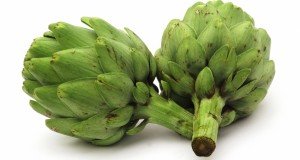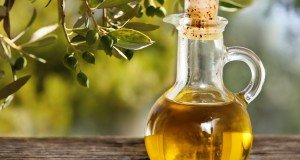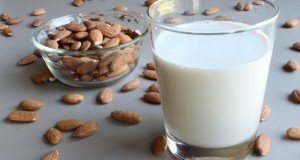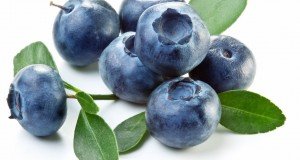New research links monk fruit to cancer healing
(NaturalHealth365) Monk fruit, also known as luo han guo, has been a “longevity fruit” in China for centuries and is used in Chinese medicine for everything from respiratory infections to digestive issues.
Many in the west may know monk fruit as a healthy and safe sugar substitute and also for its healing effects on cholesterol levels and diabetes. New research, however, is proving that monk fruit may also be a super healer when it comes to cancer as well.
New research on monk fruit points to tumor suppression
Modern science is now proving what 13th century monks in China already knew: luo han guo is not just a sweetener, but may be a powerful healer for the most serious conditions, including cancer. Japanese researchers in the early 2000’s found that certain substances in monk fruit caused significant inhibition of skin cancer tumor growth in mice.
Since then, other studies have appeared that have proven the monk fruit-cancer healing connection: (see below)
● A joint Chinese study published in the journal Oncogenesis – in April of this year (2016) – discovered that when “mogroside V” obtained from Siraitia grosvenorii (monk fruit) was administered in both in vitro and in vivo (intraveneous) pancreatic cancer models, it promoting cancer cell apoptosis and “cell cycle arrest,” possibly through the interruption of cancer cell communication (STAT3);
● A 2015 study published in the American Journal of Cancer Research stated that “Mogrol, a biometabolite of mogrosides found in Siraitia grosvenorii, has exhibited anti-cancer activities” and significantly slowed the growth of leukemia cells in an in vitro study;
● A 2011 study published in the Journal of Agricultural and Food Chemistry proved the anti-inflammatory properties of Momordica grosvenori, another variation of monk fruit, through down-regulating the expression of key inflammatory genes and up-regulating protective ones. “This study shows that the anticancer and antidiabetic effects of M. grosvenori may result in part from its anti-inflammatory activity,” state the researchers; and
● A 2008 study conducted by Zhejiang Wali College in Ningbo, China looked mostly at monk fruit’s anti-diabetic properties. In the process, it also found that mongroside V in the fruit had antioxidative properties as well. According to the study report: “Antioxidant capacity evaluated in vitro showed that MG [mogrosides extract] and mogroside V, which was the main component of MG, possessed strong oxygen free radical scavenging activities.” Balanced anti-oxidant activity has been proven to help fight cancer by cleaning up free radicals and promoting the growth of health cells.
What makes monk fruit sweet is also what helps fight cancer
The potent substances in monk fruit that gives it its cancer-inhibiting properties appears to be a grouping of chemical substances called “mogrosides.” Mogrol, mogroside V and 11-oxo-mogroside are all chemical compositions identified in the research that are derivatives of mogrosides.
Ironically, what makes monk fruit a great sweetener is also what makes it a cancer killer. Mogrosides are chemical compounds that provide the super sweet taste of monk fruit and is what is extracted by health-conscious manufacturers for powdered sweeteners. In general, research has shown a direct correlation between sugar consumption and cancer proliferation (cancer cells gobble glucose molecules up for fuel). So the fact that the sweet stuff in monk fruit actually inhibits cancer growth adds another avenue for research into the way that certain glucose-related molecules work in the body.
Research continues as to the exact mechanisms monk fruit uses to stop tumor growth, although its chemical connection to other plant substances may provide a clue. Mogrosides themselves are part of a grouping of chemical compounds called cucurbitane glycosides. Other plants containing this chemical, including bitter melon, have also proven to be cancer-fighters and immune system regulators. In addition, the first-ever glycoside to be discovered was amygdalin in 1830.
Amydalin, also known as B17 or Laetrile, is the main cancer-killing substance found in apricot kernels.
How exactly does monk fruit work to fight cancer?
Could monk fruit’s cancer-healing properties be linked to the functioning of the substances cucurbitane or its more general link to glycoside functioning as well? Or, could its overall anti-inflammatory properties hold the key? The jury is still out and the research continues.
One thing is for certain: besides providing a healthy, U.S. Food and Drug Administration-approved sugar substitute for the estimated 150 million Americans that are currently using or seeking low-calorie sweeteners and its known positive effects on conditions like diabetes, research is now proving that monk fruit may also be a powerful tool for those who wish to prevent or heal from cancer as well.
About the author: Dr. Veronique Desaulniers (“Dr. V”) is a best-selling author and specialist in Chiropractic, Bio-Energetics, Meridian Stress Analysis, Homeopathy and Digital Thermography. After 30 years in active practice, she decided to “retire” and devote her time to sharing her personal, non-toxic Breast Cancer healing journey with others. Her years of experience and research have culminated in “The 7 Essentials™ “, a step-by-step coaching program that unravels the mystery of healing the body. Her website and personal healing journey have touched the lives of thousands of women around the globe. To get your F.R.E.E. 7-day mini e-course and to receive her weekly inspiring articles on the power of natural medicine – visit: BreastCancerConqueror.com
References:
https://www.oncologynurseadvisor.com/complementary-and-alternative-medicine/the-medicinal-uses-of-monk-fruit/article/346870/2
https://en.wikipedia.org/wiki/Cucurbitane
https://www.ncbi.nlm.nih.gov/pubmed/12893428
https://www.ncbi.nlm.nih.gov/pmc/articles/PMC4848839
https://www.ncbi.nlm.nih.gov/pubmed/16010347
https://www.ncbi.nlm.nih.gov/pubmed/27120805
https://www.sciencedirect.com/science/article/pii/S0304419X13000644
https://pubs.acs.org/doi/abs/10.1021/jf201207m
https://pubs.acs.org/doi/abs/10.1021/jf200418g
https://www.ncbi.nlm.nih.gov/pubmed/19083420
https://www.ncbi.nlm.nih.gov/pubmed/27232756
https://www.ncbi.nlm.nih.gov/pubmed/25140446











